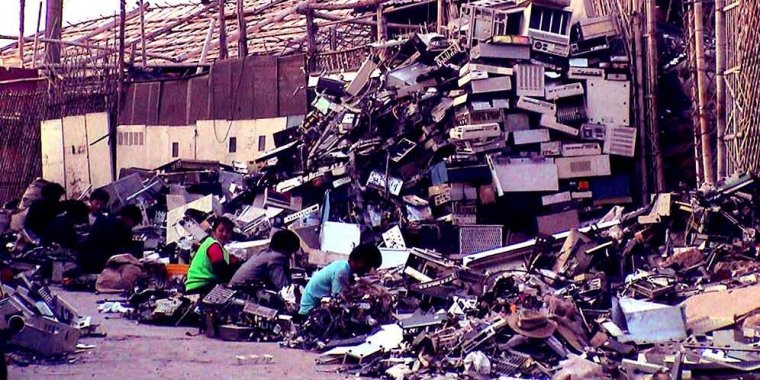| News / Science News |
Cadmium levels in waste pickers ‘four times higher’
Researchers in Brazil found that salvagers and workers at recycling facilities — known as waste pickers — who previously worked in another occupation had lower cadmium levels, suggesting that length of exposure and heavy metal concentration levels are linked.

A typical e-waste recycling operation. Workers are exposed to heavy metals, with research showing waste pickers have high levels of cadmium in their blood. Photo: Baselactionnetwork
Scientists compared the levels of cadmium, mercury and lead in the blood of 226 workers from four recycling material cooperatives at recycling sorting facilities in the metropolitan area of São Paulo, with 653 people who do not work in the industry.
These cooperatives are considered waste management agents and are contracted by municipalities or companies to sort plastic, glass, paper, and aluminium or other metal cans. The recycling sorting sites also contain electronic waste, researchers say.
The study found 0.47 micrograms of cadmium per litre of blood among recyclers, compared with 0.12 micrograms among other workers. Lead levels were about 10 micrograms higher among waste workers.
A United Nations Children's Fund (UNICEF) study found that the children of waste pickers are also exposed to heavy metals, such as lead.
Parents whose jobs involve recycling batteries can bring contaminated dust home on their clothes, hair, hands and shoes. One in three children — about 800 million worldwide — have high levels of lead in their blood, UNICEF says.
Cadmium, lead and mercury are highly toxic and carcinogenic. High levels of cadmium and lead can have neurological, digestive and cardiovascular impacts, while mercury is associated with systemic toxicity in the kidneys and central nervous system.
The levels of metals found in the recyclers’ blood show the existence of an uncontrolled exposure. But, the effects are unpredictable.
In chronic exposure, the metals accumulate over time and their harmful effects will only be seen after many years.
According to the Global Alliance of Waste Pickers, there are more than two million such workers in Latin America, with 600,000 in Brazil alone. In China, there are almost 2.5 million and in India, up to four million people are estimated to work in the waste collection sector. (SciDev.Net)
YOU MAY ALSO LIKE





